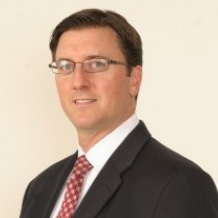Law Schools' Untapped Resources: Using Advocacy Professors to Achieve Real Change in Legal Education
If the current law school model is dilapidated, then the remodel requires more than a face-lift; it requires real structural and architectural changes. Legal education (finally) must cater to the needs of students. By most accounts, that means teaching students the knowledge, skills, and values required to serve clients and solve problems. However, to reinvent legal education in a meaningful way, law schools must involve and elevate their former second-class citizens on the faculty: advocacy professors, clinicians, and legal writing instructors. These faculty members already teach, and have long taught, in the way that would represent real change in law schools.
To the outside world, law school is not a fixer-upper; it's a tear-down. Even if many of us disagree or are quick to cite examples of meaningful change, the problems in our house have gone unattended for decades. As compared to the pace of innovation and development, law school largely has stood still. We know far more now about effective teaching methodology, learning styles, and the skills required in our profession. Yet, so much of legal education is indistinguishable from its 19th and 20th Century roots.
Legal educators read stingingly candid studies and reports. We heard negative feedback from practitioners, legal organizations, and even our own students. And we knew our foundation was in rough shape for quite a while—too many canned lectures, exclusive use of the Socratic Method, single-assessment final exams, skills and values education relegated to on-the-job training, and little to no feedback to students. We have been slower than “slow to change.”
As is now apparent from the daily news cycle, everyone agrees that law school must change from the old standards. Discussions of change regularly surface in law faculty meetings from coast-to-coast. Yet, this is nothing new to faculties. Many law professors have heard this rallying cry before and they know the drill that has sufficed in the past: get out the paint brushes and take photos for the postcards and brochures. Change the marketing and branding and kick the can down the road.
However, this time may be different. More is on the line. Prospective students are paying attention to real information. They have received and reacted to the negativity flurry. This time, the “external factors” and “market pressures” may demand more real change and less cosmetic puffery. This time, law schools should not risk it. Law schools must take on true change.
The reform challenges ahead are two-fold: first, what is “real” change that would benefit our students and improve our educational product? And, second, who will lead the necessary demolition and reconstruction of the old law school structure?
Last month, at a cutting-edge conference hosted by Stetson University College of Law called Educating Advocates: Teaching Skills (EATS), some colleagues and I were asked to lead a discussion about “Creating a 21st Century Law School.” For my part, I considered these two challenges from the intersection of two professional communities: legal education reformers, such as those affiliated through Educating Tomorrow's Lawyers, and advocacy professors who were gathered together at EATS.
For this advocacy professor, the most-effective model for real change across the law school curriculum must include three elements:
- True integration of doctrine and practical simulations aimed at teaching skills and values;
- Individualized approach to students and their learning styles: more assignments, assessment, and attention to individuals who will join our profession; and
- Genuine, detailed feedback from the professor for all exercises and assignments.
The advocacy professors at your institution, like clinicians and legal writing professors, lead courses that include these elements. These colleagues have, from the outset, effectively blended doctrine and simulations, taught skills and values, interacted with individual students, catered to different learning styles, designed and demonstrated exercises and teaching scenarios, demanded students complete many assignments other than a final exam, and provided endless oral and written feedback. Advocacy professors, clinicians, and legal writing professors should contribute to the meaningful, curriculum reform your students—and prospective students—need.
Law school faculties will discuss “integrated courses,” “skills labs,” “experiential learning,” and other code words for real change. But don't reinvent the wheel in your reform efforts. Advocacy professors, like your clinicians and legal writing professors, have mastered this pedagogy. Involve them. Put them on your committees, task forces, and working groups. Then, demystify the real change you seek by asking them to openly share their methods and materials, like the fellows of Educating Tomorrow's Lawyers. As examples, at my law school, we have designed Practice Intensive Courses (PIC) across the curriculum to feature the above elements, and the University of Denver offers Carnegie Integrated Courses (CIC) with similar methods and learning outcomes. Student feedback for these courses has been overwhelming positive.
Your advocacy professors, clinicians, and legal writing professors will tell you: students want this extra work and individualized attention. When it's done right, the students love it! Students recognize and appreciate the lasting quality of this style of instruction, and their future clients and employers will appreciate it too. With the former second-class members of the faculty providing guidance and leadership in these necessary renovations, the next changes for law schools could be real. The marketing and spin—the superficial changes and postcards law schools send to one another—can follow.
Wes Reber Porter is an Educating Tomorrow's Lawyers Fellow. The course portfolio for his White Collar Crime in Practice course, which he teaches at Golden Gate University School of Law, is shared on our website.


